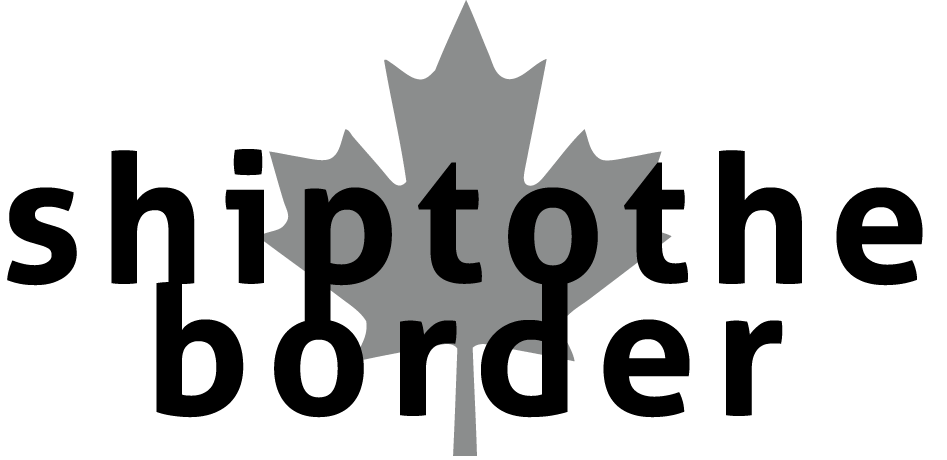If you’re a Canadian looking at purchasing products in the United States you know how confusing all this talk about taxes and duties can be. So to help you navigate through the fog I’ve put together a handy little guide so you can find what you really want to know.
Consumers
Taxes – Every Canadian crossing the border back into Canada must pay the applicable taxes and duties on the products they wish to import. (NOTE: If you ship to a KinekPoint along the border and bring back the item yourself, instead of shipping it across, you are much less likely asked to pay duty) The taxes you pay depend on the province you are crossing back into:
-
- Alberta – 5%
- Saskatchewan – 10%
- Manitoba or British Columbia – 12%
- Quebec – 12.875%
- Ontario or New Brunswick – %13
Duties – Duty may also be levied on items that you wish to import into Canada. If the product was made in Canada, the United States or Mexico there will be no duty because of NAFTA. But if the product was made in any other country there could be duties imposed ranging from 5-30%. There are also many items which are always exempt from duty including gifts valued under $60, video games, cellphones, downhill skis, and fish egg incubators. Some other common items and the applicable duty percentages (if not manufactured in a country we have a free trade agreement with) are as follows:
- Automobile tires – 7% (however motorcycle and bicycle tires are duty free!)
- Car parts – ~6%
- televisions – typically 5%, if made in South Korea (e.g. Samsung) 3%
- clothing – 6.5% to 13%
You can take a look at the complete list of duty percentages for every imaginable item provided in the Customs Tariff Depertmental Consolidation 2010 PDF file, or if you’d prefer not looking through over 1800 pages of mind numbing data I’d recommend calling Border Information Services toll-free at 1 (800) 461-9999 to ask about specific items.
Personal Exemption – However depending on how long you have been in the States you may qualify for a personal exemption (The value of goods you can bring back duty free and tax free to Canada)
- 24 hours – $50 exemption
- 48 hours – $400 exemption
- 7 days – $750 exemption.
This Canada Border Services Agency website will have some other helpful info and the most up to date exemption information.
Shipping into Canada – One way to get products from the US into Canada is through the mail or courier. Your order will arrive at your doorstep but there are some downsides including expensive international shipping and exorbitant brokerage fees. Here is a link to UPS brokerage fees, note that on top of the brokerage fee they charge a 2.7% disbursement fee (minimum $5.85) and another $4.25 that they will collect on delivery because you’re paying for these services after the fact. Say you buy a couple books for $45, you will pay $19.45 in brokerage, $5.85 in disbursement and $4.25 for COD. Your $45 of books just became $74.55, and that doesn’t include shipping! FedEx doesn’t have any fees listed on their website. These fees are one of the many reasons why Kinek’s border locations are becoming so popular.
Small to Medium-Sized Businesses
When you get into importing goods into Canada for commercial purposes there are a host of other rules and regulations you have to take into consideration. Without cluttering this post I will simply direct you to the Canadian small and medium-sized enterprise center on the Canada Border Services Agency website that will either show or link you to everything you need to know. One thing you won’t find there is a mention of the brokerage fees charged to get your item across the border. Once again, just like for the consumers, shipping your goods to a KinekPoint location and picking them up to clear customs yourself is a viable solution for small businesses looking to make their money go that much farther.
Related Article: Importing a Vehicle into Canada


Thank you for this information! Very well prepared & presented! I went looking for Duty Rates & information, & yours was the 1st I clicked on. You told me everything I needed to know, and let me know where to phone if more info is needed.
For the last 10 years I have been buying books for personal use, usually worth $40 to $80. I HAVE NEVER paid brokerage fees, until now, when I received a bill from a TNT Express company,…I wonder if this is a scam?…any comments???
C.S.
Hi Carlos,
Brokerage can be hit or miss sometimes. Brokerage is definitely not a scam but you can always call the brokerage company. There is most likely a phone number on your bill.
Wondering how much something would cost at the boarder if it was 9500.00
Hi Tom,
You should contact border services about pricing for your item at the border. If it’s not commercial, it should be the HST of the province you’re entering.
Thinking to buy 5 pairs of headlight bulbs from China,
what fees will be charged, excise too?
Thanks
Hi Peter,
You have to be careful when buying items overseas as Kinek does not accept packages with and COD charges. This means you need to contact the retailer to ensure all import fees are paid upfront before you order the item.
Hi Jeremy,
I ordered a product from USA and made in USA for about 40 dollars and I paid about 22 dollars for shipping fees under the company. It was delivered by UPS and now suddenly I have a 24$ dutie fee on this product. It is a automotive air filter.
Do I really need to pay this fee? how come it is so much?
thanks
Hi Josh,
The $24 fee you would be referring to would be a brokerage fee. It has nothing to do with where the item was made. IF you use Kinek and ship to the border and bring the items cross yourself, you will never have to pay brokerage fees.
hi. we manufacture stainless steel restaurant products, and we have a client who wants us to make and ship a 7′ x 2′ x 2′ stainless steel box and bring it to the states.
we have never done anything like this before. what do we need and how much will it cost?
Hi Gayle,
Your client would need to sign-up for a Kinek account at http://www.kinek.com and choose a KinekPoint to have the sink delivered to. Pricing is based on the weight of packages, and each KinekPoint sets their own pricing. Once an account is created, a KinekPoint’s profile can easily be viewed by navigating to “View Hours & Pricing”.
Wanting to buy used Harley parts in the U.S and ship them back by Mail what are the charges on those.Thanks
Hi Karen,
At this time, Kinek does not offer package forwarding services into Canada. However, some of our KinekPoints do offer this service once your Kinek package is delivered to their location. Direct arrangements can be made through them. Once you choose a KinekPoint, you can click on “View Hours and Pricing” to see their pricing schedule. Package pricing is all based on the weight of your package.
If I were to buy something from a private seller in the USA, me being in Canada, would there brokerage fee? And if so how much if I paid 75.00CAD for the item
Hi Graham,
After picking up a package at a KinekPoint, you would only be required to pay your provincial sales tax at the border when entering back into Canada.
I’ve started selling candles from an American company. I’m worried to put in my orders they will be around $200. I don’t want to get stuck paying taxes on my customers products. what is my best option for living in Nova Scotia
Hi Alayna,
I suggest contacting Border Services to ask about your best options for your business.
http://www.cbsa-asfc.gc.ca/menu-eng.html
Hello,
I may be lost on the wrong site here but I am trying to find out once and for all whether there is duty charged on used items coming into Canada.
I am asking about ordinary individuals, not major retailers, recyclers, or anything big, just ordinary little people buying things online that are used, and NOT made in Canada, the US, or Mexico.
I understand that items over $20 Cdn are subject to charges, and nearly all are taxable, but what about duty on all used (or even ‘antique’) items?
Hi Lisa,
To my knowledge, yes, there is HST charged on used items. If you want confirmation from the Canadian government you should contact Border Services.
1-800-461-9999
I live in Manitoba, Canada and want to buy from Amazon.com and ship to Kinek in North Dakota. Amazon is charging taxes as required for North Dakota buyers. When I pick up the items I will have to also pay PST, GST when I come back to Canada. How do I get my taxes back that I paid to Amazon? I know that you can make a tax claim for items bought in North Dakota but Amazon is not located in North Dakota so I’m not sure if I can get my taxes back. I normally don’t worry about it for small priced items but my purchase will be $1800.00.
Hi Angelo,
This is a question for Border Services. – 1-800-461-9999
I bought a atv in canada and i am leaving at my friends to come back and ride in the summer . I bought winch and boxs for it here int he usa. will i have to pay taxes on these items if i prove i own the atv in canada?
Hi Koza,
This would be a questions for border services. They control what you pay at the border – 1-800-461-9999.
Hi,
I ordered something online and paid the amount and shipping. Now I am receiving phone calls, texts and emails from company stating my item as incurred almost $70 worth of import taxes and requiring me to pay online. I have to received my items as yet.
Is this right? Is this a scam? How did the caluculate import fees? I am use to paying the duty or taxes if needed when I’ve received the item.
Item coming from England.
Hi Kayla,
If you are buying from outside of North America your items may be subject to import fees. Many larger companies in China/Uk/Australia are able to calculate these costs at the time of purchase and bill you upfront, however, many smaller companies and individual sellers do not offer this option. Import fees is not a scam if you are buying from a retailer outside of North America.
HI,
I am looking at buying a truck canopy that is manufactured in the USA. I live in B.C. close to the board so I would be able to dive to Bellingham to buy it and have it installed. What taxes would I have to pay, (USA and BC) and would there be duty on it as well?
Hi Don,
You just pay the sales tax of BC when you cross back into Canada.